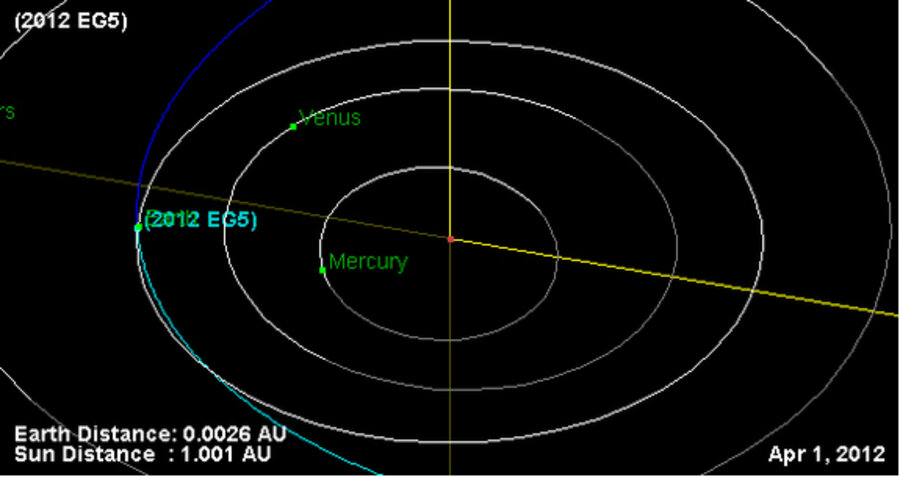Jet-airliner-sized April Fools' Day asteroid buzzes Earth
Loading...
An asteroid the size of a passenger jet zoomed near the Earth Sunday (April 1), just in time for April Fools' Day, but the space rock flyby posed no threat of hitting our planet, NASA officials said.
The asteroid 2012 EG5 was closer than the moon when it flew by Earth at 5:32 a.m. EDT (0932 GMT). The space rock is about 150 feet wide (46 meters), according to a NASA records. Scientists with the space agency announced the April Fools' asteroid flyby on Friday, March 30.
"Asteroid 2012 EG5 will safely pass Earth on April 1," scientists with NASA's Asteroid Watch program at the Jet Propulsion Laboratory in Pasadena, Calif., wrote in a Twitter statement.
The space rock may have visited Earth on April Fools' Day, but its flyby was no prank. The asteroid crept within 143,000 miles (230,000 kilometers) of Earth during its closest approach, which is just over half the distance between Earth and the moon's orbit. The moon typically circles the Earth at a distance of 238,000 miles (382,900 km).
Asteroid 2012 EG5 was the third relatively small asteroid to buzz the Earth in seven days. Two smaller asteroids passed near Earth on Monday (March 26).
Early Monday, the bus-size asteroid 2012 FP35 came within 96,000 miles (154,000 km) of Earth. It was followed a few hours later by asteroid 2012 FS35, which is the size of a car and passed Earth at a range of 36,000 miles (58,000 km).
Like asteroid 2012 EG5, those two smaller space rocks on Monday posed no risk of hitting Earth. Those space rocks were so small they would not survive the trip through Earth's atmosphere, even if they were aimed at our planet, Asteroid Watch researchers said.
Asteroid 2012 EG5 was discovered on March 13 by astronomers searching for near-Earth space rocks. Another space rock, the asteroid 2012 FA57, was discovered on March 28 and will fly by Earth on April 4 when it passes at a range just beyond the orbit of the moon.
Scientists with NASA's Near-Earth Object Program at JPL and other teams of astronomers regularly monitor the sky for larger, potentially dangerous asteroids to determine if they pose an impact threat to Earth.
You can follow SPACE.com Managing Editor Tariq Malik on Twitter @tariqjmalik. Follow SPACE.com for the latest in space science and exploration news on Twitter @Spacedotcom and on Facebook.







